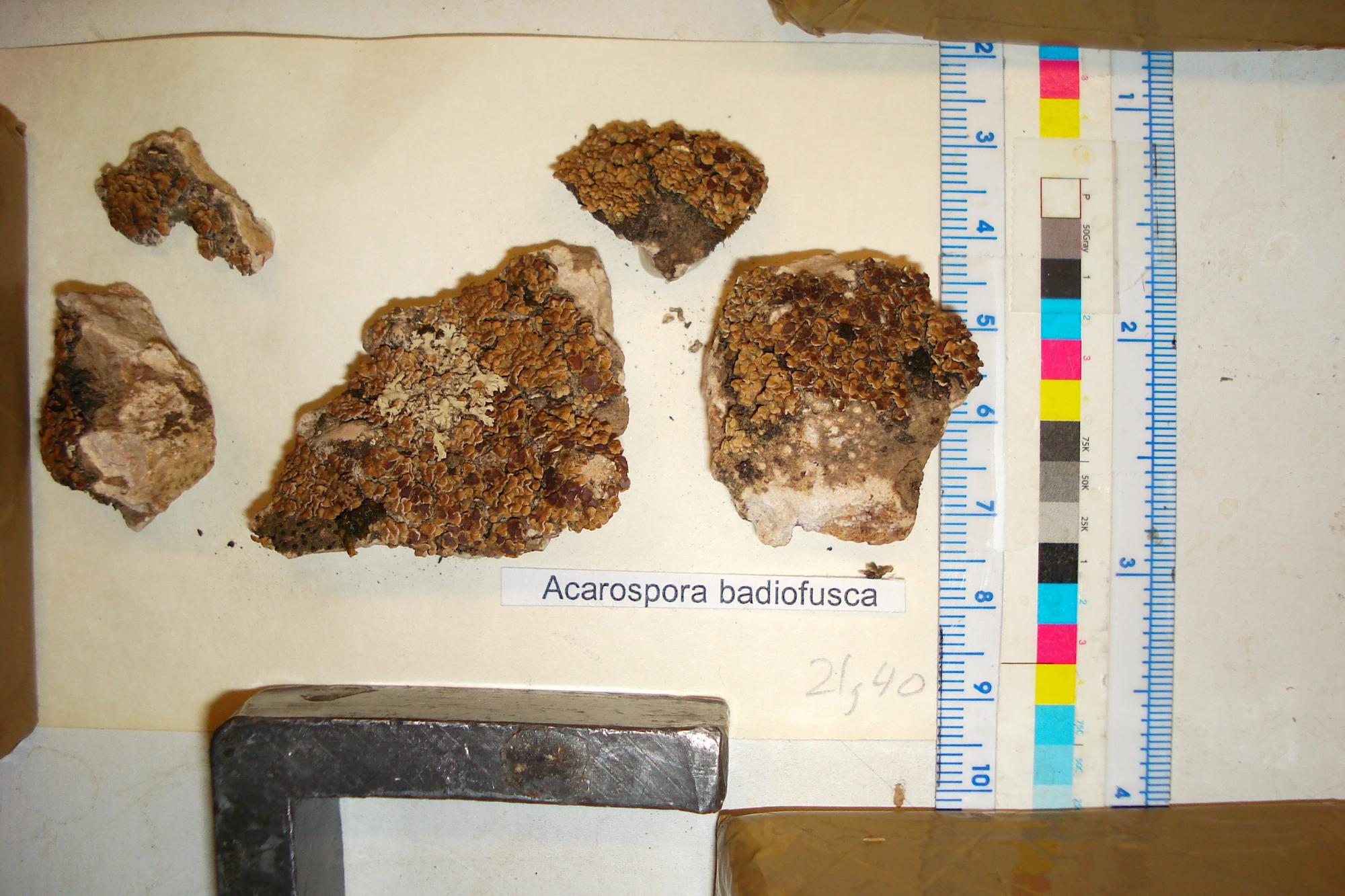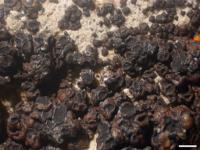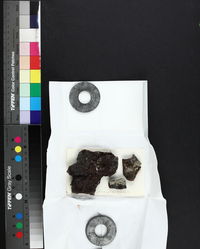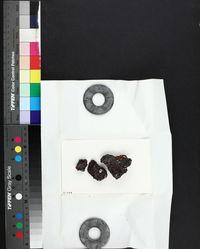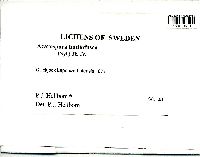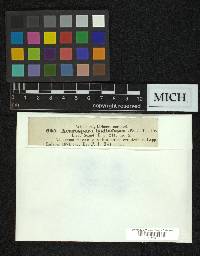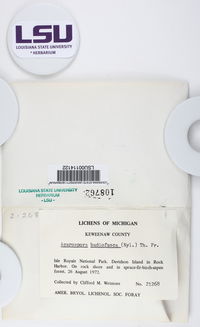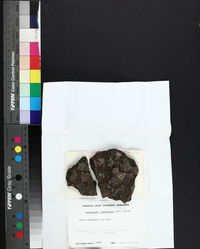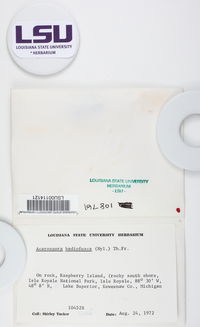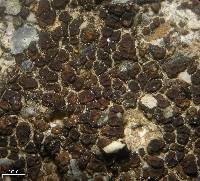
Consortium of Lichen Herbaria
- building a Global Consortium of Bryophytes and Lichens as keystones of cryptobiotic communities -
- Home
- Search
- Images
- Species Checklists
- US States: O-Z >
- US National Parks
- Central America
- South America
- US National Parks
- Southern Subpolar Region
|
|
|
|
Family: Acarosporaceae
[Acarospora californica Zahlbr., moreLecanora badiofusca Nyl., Sarcogyne athroocarpa H. Magn.] |
Nash, T.H., Ryan, B.D., Gries, C., Bungartz, F., (eds.) 2007. Lichen Flora of the Greater Sonoran Desert Region. Vol 3. Thallus: areolate, subsquamulose or verruculose, up to 5 cm across areoles (or verrucae): round or angular, lobed or not, 0.3-1(-3) mm in diam., up to 1 mm thick, contiguous to dispersed; mature verrucae form individual lecanorine-like apothecia with an expanded disc; rim:±downturned upper surface: pale gray to yellow or reddish brown, eventually blackened, dull or glossy, flat to convex, , fissured and rugulose, or smooth, epruinose upper cortex: paraplectenchymatous, 30-40(-70) µm thick; cells round to angular, (3-)4-5(-6) µm wide, in ±vertical rows; syncortex: lacking or up to 10 µm thick; eucortex: upper layer dark brown and 10-15 µm thick, lower layer hyaline and 20-50 µm thick lateral and lower cortices: continuous with upper cortex, thinning up to ±15 µm wide algal layer: even medulla: white, prosoplectenchymatous lower surface: white to dark brown or black attachment: broad, eventually elevating areole (gomphate), lacking a stipe Apothecia: one per squamule, round to angular, ±1 mm in diam., beginning punctiform, often becoming much larger than surrounding areoles, appearing as lecanorine apothecia growing between areoles disc: reddish-brown to black, flat to convex; surface smooth to rough parathecium: 15-20 µm wide when distinct epihymenium: yellowish brown, 10-15 µm thick hymenium: hyaline to pale yellow, 60-85(-100) µm tall; paraphyses: (1-)2.3(-3) µm in diam. at base, apices unexpanded or expanded to ±4 µm, sometimes blackish subhymenium: hyaline, 20-30(-40) µm thick; hypothecium: indistinct asci: clavate, expanding into epihymenium, 50-80 x 12-23 µm, often few developed per apothecia, 100+ spored ascospores: hyaline, simple, usually narrow ellipsoid but often varying in size or shape in single ascus, 3-6 x 1-2.1(-3) µm Pycnidia: not seen Spot tests: UV-, all spot tests negative Secondary metabolites: none detected. Substrate and ecology: from lower to higher elevations, carbonate or granitic rocks, often surfaces flushed with water seasonally World distribution: Europe and North America Sonoran distribution: locally common at usually higher elevations in Arizona and southern California. Notes: When infertile or with punctiform apothecia, specimens can be hard to determine. Specimens with only 2 µm wide paraphyses at the base and unexpanded apices may be hard or nearly impossible to distinguish from verruca-forms of A. veronensis without seeking the expanded lecanorinelike discs typical of A. badiofusca in the thallus. Specimens with all areoles forming lecanorine-like apothecia are hard to distinguish from A. cervina-like forms of A. glaucocarpa, but they differ at least in having an even algal layer and usually narrower spores. The subspecies proposed by Clauzade et al. (1981) is rejected here, as there appears to be no correlation between their concepts and distribution on substrates in Sonoran area. Immature continuous thalli can be mistaken for A. scotica, esp. if algal layer is thin, but usually some fertile areoles can be found and A. badiofusca differs in having wider paraphyses. |
|
|
|
Powered by Symbiota

